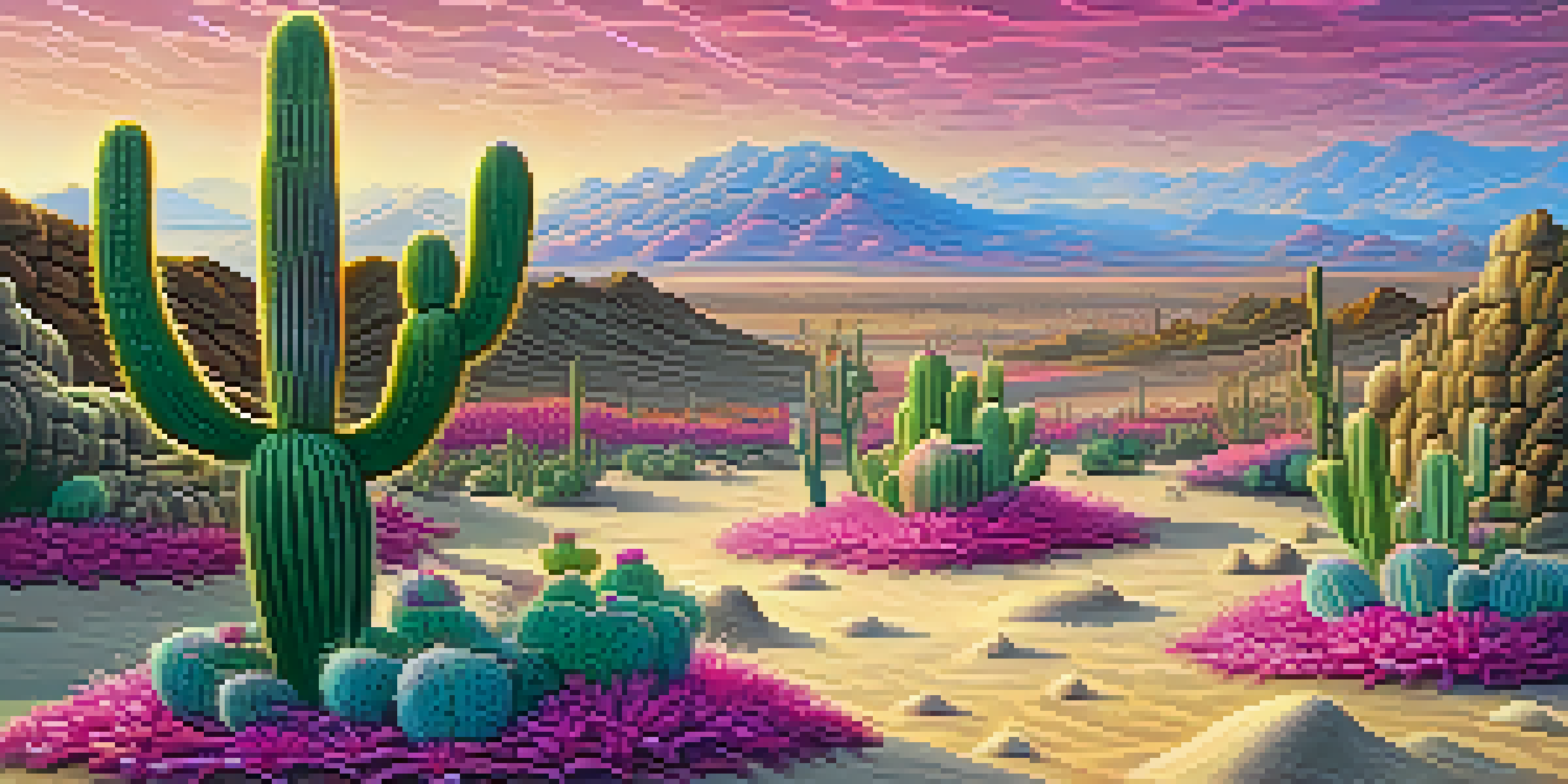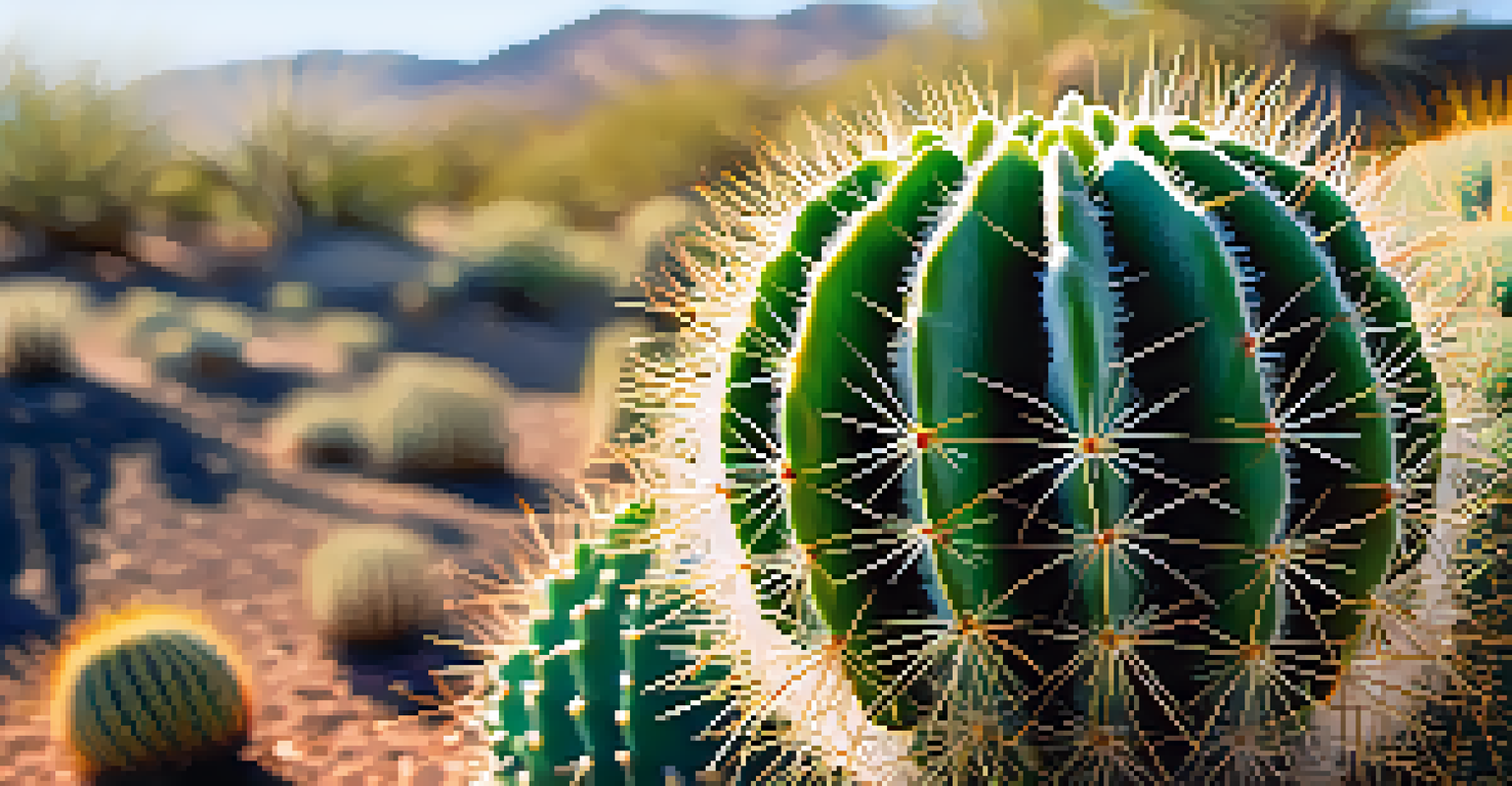Psychedelics and Creativity: The Role of Peyote in Art

Understanding Peyote: A Brief Overview
Peyote, a small cactus native to Mexico and the southwestern United States, has been used for centuries in spiritual and healing rituals. This cactus contains mescaline, a psychoactive compound that alters perception and consciousness. Its use dates back to ancient indigenous cultures who valued it for its visionary properties and connection to the divine.
The use of peyote in artistic practices is deeply rooted in its cultural significance among indigenous peoples.
Incorporating peyote into artistic practices has sparked interest among contemporary artists seeking inspiration. The unique experiences induced by peyote can lead to profound insights and creative breakthroughs. Many artists report that their work becomes more vivid and expressive after peyote experiences, opening doors to new realms of imagination.
Understanding the cultural significance of peyote is essential for appreciating its role in art. For many indigenous peoples, peyote is not just a substance but a sacred tool for exploring the mind and spirit. This historical context enriches our understanding of how peyote influences creativity in modern art.
The Science Behind Psychedelics and Creativity
Research suggests that psychedelics like peyote can enhance creativity by affecting brain connectivity. When under the influence of mescaline, users often experience increased neural communication, leading to novel ideas and unique perspectives. This phenomenon can be likened to a jigsaw puzzle where pieces that seemed unrelated suddenly fit together beautifully.

Studies have shown that psychedelics may reduce the 'default mode network' activity in the brain, which is responsible for self-referential thoughts and rigid thinking. By quieting this network, individuals may find themselves thinking outside the box, leading to creative solutions and artistic expression. It's like opening a floodgate, allowing a rush of ideas to flow freely without the constraints of everyday logic.
Peyote's Role in Artistic Inspiration
Peyote has been utilized by artists to unlock profound insights and enhance creativity through unique, visionary experiences.
Moreover, the subjective experiences associated with peyote can foster emotional depth in art. Artists often channel their feelings and insights gained during peyote experiences into their work, resulting in pieces that resonate on a deeper level with viewers. This emotional connection can transform art into a powerful medium for communication and reflection.
Notable Artists Who Used Peyote
Throughout history, several renowned artists have turned to peyote as a source of inspiration. One such figure is the American painter and muralist Diego Rivera, who was known for his vibrant and politically charged works. Rivera's use of peyote helped him tap into a deeper understanding of his cultural roots, resulting in art that celebrated indigenous heritage.
Psychedelics can induce intense psychological experiences, which may not be suitable for everyone.
Another notable artist is the poet and writer Aldous Huxley, who famously explored the effects of mescaline in his book 'The Doors of Perception.' Huxley's experiences with peyote opened his eyes to new realities, influencing his literary style and philosophical thoughts. His reflections continue to inspire artists and thinkers today.
These examples illustrate how peyote has played a crucial role in the creative processes of influential artists. By examining their works, we can see the lasting impact of peyote on artistic expression and cultural discourse. Their legacies remind us of the potential for psychedelics to unlock hidden realms of creativity.
Cultural Significance of Peyote in Art
The use of peyote in artistic practices is deeply rooted in its cultural significance among indigenous peoples. For many Native American tribes, peyote is regarded as a sacred plant that facilitates spiritual connection and healing. This cultural context adds layers of meaning to artworks inspired by peyote, reflecting the artists' respect for tradition.
Artists who draw from peyote experiences often find themselves blending personal vision with cultural narratives. This intersection creates a unique space where contemporary art meets indigenous wisdom, fostering a dialogue between the past and present. It’s akin to weaving a tapestry that tells a story of resilience and transformation.
Cultural Significance of Peyote
For many indigenous peoples, peyote serves as a sacred tool that connects spirituality and cultural heritage, deeply influencing contemporary art.
However, it’s crucial to approach this topic with respect and sensitivity. Misappropriation of indigenous practices can lead to ethical dilemmas in the art world. Artists must navigate these complexities while honoring the cultural significance of peyote and its rightful place in artistic expression.
Creative Techniques Influenced by Peyote
Many artists report adopting new creative techniques after experiencing peyote. For instance, some experiment with color and form in ways they hadn't considered before. The heightened senses and altered perceptions can lead to a bold exploration of materials and methods, resulting in innovative artwork that defies conventional boundaries.
In painting, artists might embrace spontaneous brushwork or unexpected color palettes, reflecting the free-flowing thoughts that peyote can inspire. This shift in approach can bring a sense of joy and playfulness to the creative process. It’s as if the artist is rediscovering their inner child, unencumbered by self-doubt or fear of judgment.
Moreover, peyote can encourage artists to delve into new themes and subjects. Inspired by their introspective journeys, they may create works that explore identity, spirituality, and the human experience in profound ways. This thematic expansion enriches the art world, inviting viewers to reflect on their own experiences and emotions.
Challenges and Risks of Using Peyote
While the creative potential of peyote is compelling, it’s essential to acknowledge the challenges and risks associated with its use. Psychedelics can induce intense psychological experiences, which may not be suitable for everyone. Individuals with a history of mental health issues should approach peyote with caution, as it can exacerbate underlying conditions.
Moreover, the legality of peyote varies widely around the world, creating barriers for artists seeking to explore its benefits. In some regions, peyote is protected as a sacred plant, while in others, its use is heavily regulated or prohibited. This inconsistency can lead to ethical dilemmas and cultural misunderstandings.
Risks of Using Peyote Creatively
While peyote has creative potential, it poses psychological risks and legal challenges that artists must navigate carefully.
Artists must weigh the potential risks against the benefits when considering peyote as a source of inspiration. It's vital to foster a responsible and informed approach that respects both personal well-being and cultural significance. Open dialogues within the artistic community can help navigate these complexities and promote safe practices.
Conclusion: The Future of Peyote in Creative Expression
As interest in psychedelics continues to grow, the role of peyote in creative expression is poised to evolve. Artists are increasingly exploring the intersection of spirituality and creativity, seeking ways to integrate peyote experiences into their work. This trend reflects a broader cultural shift towards embracing holistic approaches to art and well-being.
Furthermore, as research into psychedelics expands, we may gain deeper insights into their effects on creativity and mental health. This scientific exploration could lead to a more nuanced understanding of how peyote influences artistic processes. It’s an exciting time for artists eager to push boundaries and explore new territories.

Ultimately, the future of peyote in art will depend on respecting its cultural significance while fostering innovation. By honoring the past and embracing the potential for new expressions, artists can continue to create meaningful works that resonate with audiences for generations to come.